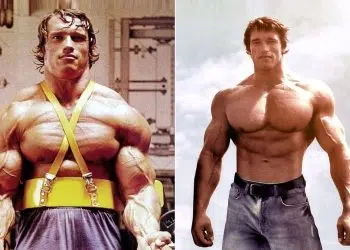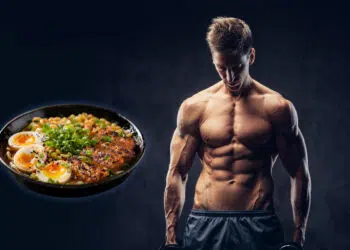I have covered in some detail many of the facets required to build muscle. From the ideal number of reps to the best training split, there has been a lot of discussion on the subject of how to best build more muscle, and with good reason. That reason being that most everyone engaged in any type of fitness related pursuit wants to build more muscle. If not for the reason of function then for the reason of aesthetics. Let’s not pretend that we don’t all enjoy looking strong just as much as we like being strong. The reality is that in this world where often the heaviest thing we will lift is a child or a bag of groceries, the need to be able to pound out reps at the gym is purely for reasons of appearances or to feel good about ourself. With that said, let’s look at exactly what we need to do in order to build more muscle.
Another reason this subject receives so much attention is because it isn’t as easy as you would think. If building muscle was as simple as going to the gym, lifting some weights and eating a lot, then there would be little to discuss. Going to the gym and lifting weights will most certainly have to happen if muscle hypertrophy is the goal, but how that is performed is something that needs to be looked into further.
In a recent article I outlined how time under tension and fatigue are two of the most important, if not the only important, components to stimulating new muscle growth. I talked in that article, one specifically on how to perform drop sets for maximum muscle mass development, about how increasing the load is the best way to increase the tension placed on the muscle you are training. Today I want to look at that in a little more detail.
The reason I want to look at this in greater detail is because while it is true that lifting heavy weights will ultimately grow stronger muscles and in turn larger muscles, we still need to look at how we are performing those reps in order to make sure it’s the muscles we are growing and not just increasing our tendon strength and our ability to better recruit muscle fibers to perform low rep, maximum lifts.
Lifting using constant tension is something I have come to accept as being necessary in order to keep the stress on the muscle at all times. When the explosive portion of the lift is removed then the load is placed solely on the muscles. Because the tempo is slowed down when lifting using this technique then the benefits of the eccentric portion of the lift are magnified as well. Aside from increasing the weight to ratchet up the tension, what else can be done to build the muscle?
Finally I’m getting to that. I needed to go through all-of-the above first in order to give the following portion context, because all of the above still applies, but it is working our muscle under the above guidelines that is the next necessary step. Muscle is built stronger by placing a load on it and then lifting it for a rep or a few.
Level Up Your Fitness: Join our 💪 strong community in Fitness Volt Newsletter. Get daily inspiration, expert-backed workouts, nutrition tips, the latest in strength sports, and the support you need to reach your goals. Subscribe for free!
Yes tendons will be involved, but still the muscle will grow stronger. To really see the results we need to place a load on that muscle and work it. By that I mean lifting the weight for a varying number of reps in order to create differing levels of tension and fatigue. I’m not just referring to myofibrillar hypertrophy versus sarcoplasmic hypertrophy. I’m talking about the generation of new muscle proteins and the methods we can use to stimulate them. In this case, using varying rep ranges will best accomplish that goal.
What led me to this conclusion was a recent study I happened upon that was performed by the kinesiology departement of McMaster University in Hamilton, just an hour west of Toronto. The discovery they made was in line with all of the above, and in fact focused on the element of fatigue being the most important in order to stimulate and accumulate new muscle mass. Their findings were that as long as the weight was lifted to failure, the stimulation of new muscle was the same regardless of how heavy the weight was.
This means that doing heavy set of five to eight reps will certainly grow those muscles of ours to be much larger as long as we are lifting until failure, but it also means that sets of 15 to 18 reps will also accomplish the same thing. Yes different fibers will be stimulated to create new muscle proteins in that range, but that is the point. By varying the training stimulus to cover a wide variety of repetitions at different loads, we will be putting our muscle under different tensions, which will stimulate different muscle fibers. By doing this we will be stimulating the largest amount of muscle by putting the greatest amount of muscle under tension and creating the highest and most comprehensive degree of fatigue.
It has been said on numerous occasions that variety is the spice of life. In this case it isn’t the exercises that necessarily need to vary, but the number of reps completed during those exercises that needs to change. It’s hard to imagine that lifting lighter weights for more reps can build more muscle, but it also makes sense. How would lifting the same heavy weight for four sets provide a greater stimulus than doing four sets to failure in completely different rep ranges?
Happy Lifting!











